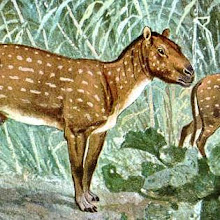According to Greek Mythology, Persephone was the Goddess of Spring, Queen of the Underworld, and the daughter of Demeter, the Goddess of Growth. This refers to plants, not animals. For those of you who are not familiar with the story, you may be wondering about this. Apparently, Hades fell in love with Persephone due to an arrow of love, whisked her away to the underworld, Demeter said "I am angry" and turned the world into a barren place, like in winter. Zeus found out about this, complained to Demeter, and said he would get back Persephone, but oly if she hadn't eaten anything. Turns out she did, 4 pomegranate seeds. Hades said that because of this, she had to stay for him 4 months, and this is where they thought winter comes from.
Some of you might be shocked that pomegranate seeds are the cause of this, but this is not why I am talking about her. In our class we read an essay that refers to "Pluto, Proserpina, and the three Furies" as "the three infernal deities." These are the Roman names for Hades, Persephone, and the Furies, whatever their Greek name is. I could tell who "Proserpina" was and thought "Why in the world is she one of the infernal deities!? She's forced to rule the Underworld and I'm pretty sure she's kind, not sadistic as the essay implies!" I was ready to talk about why Bacon was wrong, but he's actually correct.
When Persephone is ripped away from her mother, she becomes this cruel person, or at least callused. She is referred to as "The Iron Queen." But when she returns to her mother she becomes her sweet, uncallused self again. This is what I personally think, but there could be two other possibilities. The first other possibility,which I doubt, is that Persephone is naturally cruel, but you wouldn't expect this much of the Goddess of Spring. The other is that she likes Hades. The myth does not talk much about what happened while Persephone was with Hades, so she could have developed feelings for him and tries to be cruel just to please him.
So, Persephone is not entirely as sweet as I originally thought, but the reason is why. Is she bitter about being torn away from her mother for 1/3 of the year and takes it out on whomever she can? Or is it because she loves Hades and is being cruel just for him?
By the way, sorry to ruin the contemplative moment, but here is something else to think about: Hades married Persephone. Persephone is Demeter's Daughter. Demeter is Hades' Sister.
Blog Plagiarism: A Friendly Reminder
11 years ago
